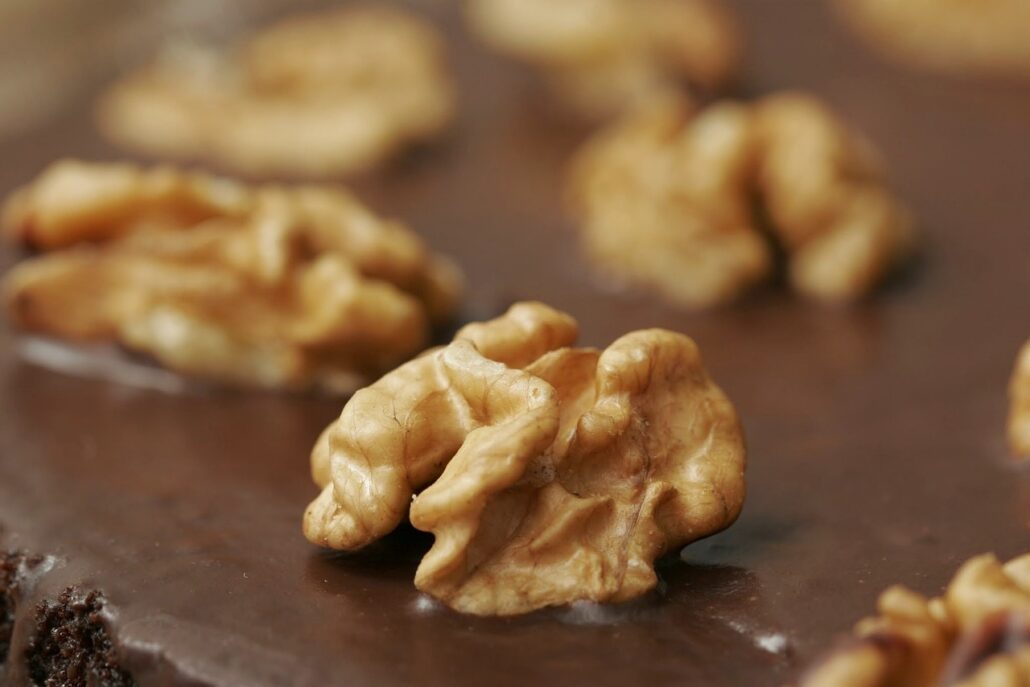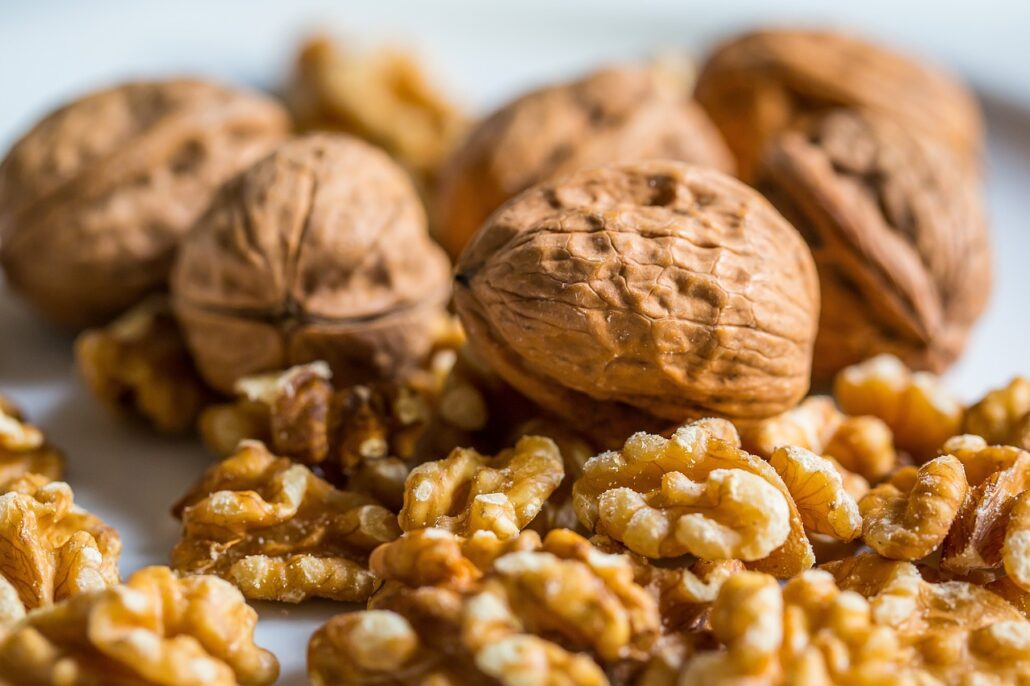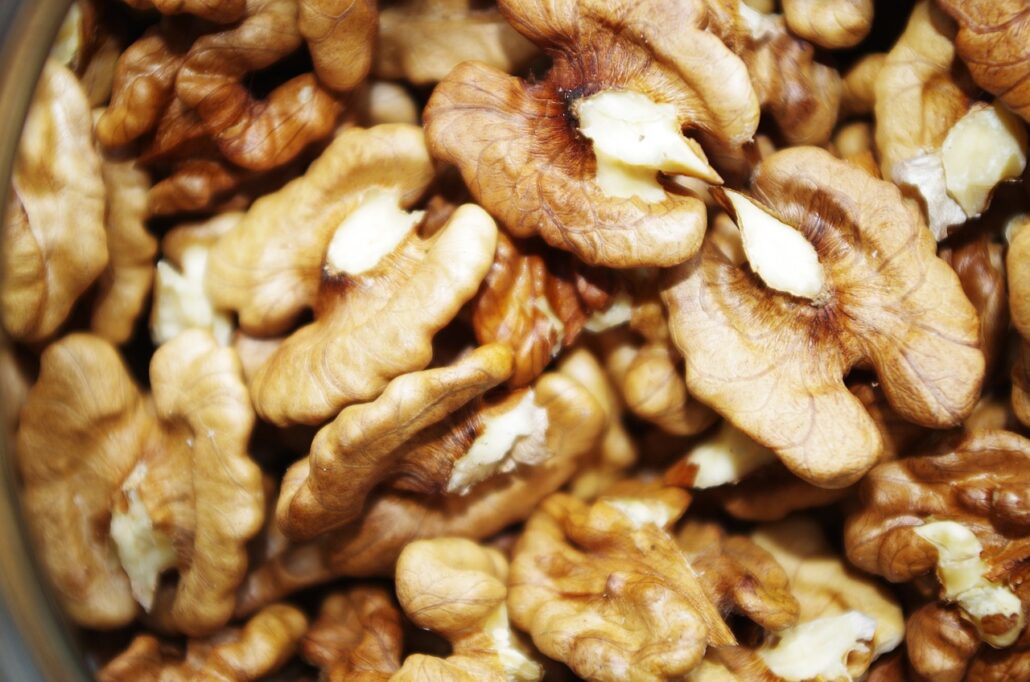Do Walnuts Have Lectins?

You may be wondering whether walnuts contain lectins, and whether they are high or low in lectins.
| Walnut | no lectins |
| Walnut leaves | contains lectins |
The only research we’ve seen that shows lectins in walnuts is in walnut leaves, not the walnuts themselves.
Are Walnuts Lectin-Free?
Looking at the research, walnuts did not show lectin activity. One piece of research tested the kernel of walnuts and showed no lectin activity across all blood types.1
Another study tested the shell, kernel, and leaf of walnuts and found that the shell and the kernel did not show lectin activity. The leaf however, did show some lectin activity.2
That being said, I’ve never seen someone walking down the street eating walnut leaves (can you imagine that?) and am guessing you’re probably more interested in the nut rather than the leaves.
By the way, did you get my low lectin guide above? If not, smash the button and get it now!
In both studies, the research tested for agglutination on human blood of types A, B, AB, and O.

Are Walnuts High In Lectins?
As mentioned above, the research we have seen showed no lectin activity in the kernel of walnuts.
This would suggest that walnuts are not a high lectin food.
There was lectin activity in the leaves, but who really is eating those?
Are Walnuts Low In Lectins?
The research we mentioned above showed no lectin activity in the kernel of nuts, which suggests that walnuts are a low lectin food.
The exception was the leaves, which did show lectin activity.
Walnuts are a plant food and therefore may contain some amount of lectins, but it may be low enough so as not to show up in the testing.
Generally speaking, walnuts are considered to be low enough in lectins that they are safe for humans to eat.
Limitations In Testing For Lectins In Walnuts
There are some limitations to be considered for testing lectins in walnuts. First of all, the quantity of lectins may vary based on a number of factors, including the variety of walnuts.
In the research mentioned above, walnuts with the scientific name Juglans regia were used. These are sometimes called English or Persian walnuts.
There are many other varieties of walnuts, which we mention more of below.
Another thing to consider is that a result of no lectin activity does not necessarily mean there are no lectins. Some types of lectins may not show up with certain types of testing methods, and furthermore there may be a threshold to which lectin activity is seen.

Types of Walnuts
Besides the common walnuts mentioned above, there are many other types of walnuts that exist.
As mentioned above, the research was performed on Juglans regia, also sometimes called the common walnut, English walnut, or Persian walnut.
Other types of walnuts include black walnuts (Juglans nigra) which are said to have an earthy, bolder flavor compared to the milder flavor of common walnuts.
White walnuts, also known as butternuts (no, I’m not making this up!) are said to have a sweeter flavor. Their scientific name is Juglans cinerea.
Heartnuts (known as Juglans ailanthifolia var. cordiformis) are a variety of Japanese walnut that are named after their heart-shape.3
There are many varieties of California walnuts. Chandler, Hartley, Howard, Tulare, Serr, and Vina are said to to account for over 85% of walnuts grown in California.4
And there are many other types of walnuts as well.
Should You Eat Walnuts?

Walnuts are considered a very nutritious food added to all sorts of dishes and even snacked on. You may find them in or on ice cream and they can also be turned into walnut butter.
Since they are a nut, you may want to limit your intake since they are high in calories as a result of being high in fat.
Other Nutritional Components Of Walnuts
Walnuts contain many different vitamins and minerals as well as other micronutrients.
For example, they contain the minerals Magnesium, Copper, and Manganese, among many more. They also contain vitamins such as Thiamin (Vitamin B1) and Riboflavin (Vitamin B2).
Walnuts are also sometimes considered alkaline, perhaps as a result of containing calcium, magnesium, and potassium, which are sometimes called “alkalizing” minerals.
Calories in walnuts mostly come from fat, although they do have a reasonable amount of protein, and are low in carbohydrates.
They also contain some amount of fiber, which may help with digestion.
Resources:
1. http://medicinalplants-kr.org/
2. https://sciendo.com/article/10.1515/sjecr-2016-0031
3. https://landscapeplants.oregonstate.edu/plants/juglans-ailantifolia
4. https://walnuts.org/about-walnuts/how-walnuts-are-grown/
